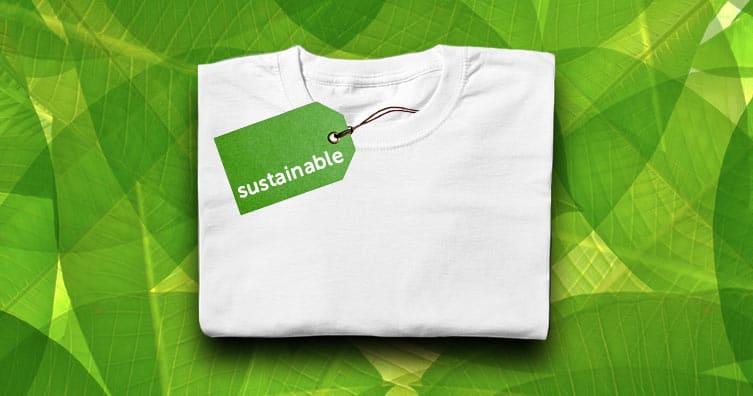Cape Town Sustainable Fashion Designers Leading the Environment-friendly Motion
Cape Town Sustainable Fashion Designers Leading the Environment-friendly Motion
Blog Article
Stay Ahead of the Curve by Checking Out Ingenious Style Fads
In a sector as vibrant as fashion, remaining in advance includes even more than simply complying with current patterns-- it demands an expedition of innovation. Smart fabrics, for circumstances, are transforming garments right into functional work of arts, while 3D printing is changing style procedures with its customizable, waste-reducing capabilities. As sustainability comes to be a cornerstone, technologies like green products and round fashion practices are reshaping environmental obligation - Cape Town Sustainable Fashion. Furthermore, the merging of innovation and style heralds a new age of consumer interaction. How, after that, can these emerging trends redefine the future of style, and what implications do they hold for brands seeking to grow in this progressing landscape?

Embracing Smart Textiles
In recent years, the style industry has witnessed a transformative shift with the assimilation of smart fabrics, an innovative innovation that mixes modern technology with textile. This development represents not only a combination of aesthetics and functionality however likewise a considerable leap towards sustainability and customization in vogue. Smart fabrics, also called e-textiles, installed innovative electronics such as sensing units and conductive strings within the textile, making it possible for garments to connect with the user or the setting.
These textiles are made to keep an eye on physical parameters, such as heart price or body temperature, giving real-time wellness analytics. Past health applications, wise fabrics are also being made use of for flexible apparel, which can transform shade or pattern in action to environmental stimuli, hence providing a dynamic style experience.
In addition, the development of energy-harvesting textiles that generate power from movement or sunlight is leading the method for self-dependent wearable technology. This development is attracting ecologically aware consumers and developers intending to lower the environmental impact of style. As research study and advancement in this field advance, clever fabrics are anticipated to become increasingly prevalent, reshaping the landscape of modern fashion with their multifunctional abilities.
The Increase of 3D Printing
Changing the production landscape, 3D printing has become a game-changer in the fashion business. This advanced modern technology has made it possible for developers to push the boundaries of creativity, generating elaborate and tailored garments that were previously unthinkable. By leveraging electronic layout and additive manufacturing, 3D printing helps with the production of complex geometries and patterns, enabling designers to trying out new textures and structures.
A notable benefit of 3D printing in vogue is its capacity to create on-demand, decreasing waste and reducing stock requirements. This performance not only maximizes production procedures however likewise allows for rapid prototyping, enabling designers to bring their visions to life in a shorter timeframe. In addition, 3D printing supports personalization somewhat unmatched by typical methods, using one-of-a-kind designs and personalized fits tailored to individual consumer preferences.
The surge of 3D printing has actually also democratized fashion, making it accessible to arising designers who can currently make high-grade pieces without significant economic investment in conventional manufacturing facilities. As technology continues to development, the garment industry is positioned to harness the full capacity of 3D printing, exploring brand-new products and techniques that will definitely redefine how fashion is developed and created.
Sustainable Style Developments
As the apparel industry grapples with journalism need for ecological obligation, sustainable style developments have emerged at the center of transformative adjustment. The growing recognition of environmental influence has actually fueled a change towards even more eco-conscious practices and materials. Brand names and developers are currently prioritizing sustainability, integrating methods that decrease waste and lower carbon footprints.
One considerable development is the surge of circular style, which stresses recycling and upcycling to expand see this website the lifecycle of garments. This technique not just reduces waste yet additionally urges customers to adopt an extra conscious strategy to apparel consumption.
Another development lies in the adoption of cutting-edge dyeing methods that use waterless procedures or natural dyes, consequently reducing the large quantities of water and chemicals commonly made use of in textile dyeing. Moreover, innovations in biotechnology have actually caused the creation of lab-grown leather and materials, offering cruelty-free and eco-friendly alternatives to standard products. Via these pioneering efforts, the apparel industry is making purposeful strides towards an extra lasting future.

Tech-Integrated Apparel
Tech-integrated clothing represents a revolutionary combination of fashion and technology, reshaping how individuals connect with their garments. This innovative domain is marked by the inclusion of wise fabrics and embedded digital elements, improving both performance and aesthetic charm. From health and fitness trackers embedded in sports apparel to Read Full Article warmed jackets controlled through smartphone applications, tech-integrated clothing supplies customers extraordinary comfort and adaptability.
Introducing brands are driving this pattern, concentrating on creating garments that react to environmental stimuli or individual commands. As an example, some garments can alter shade or pattern in reaction to temperature shifts, while others integrate biometric sensing units to check health and wellness metrics like heart price or tension degrees. The smooth assimilation of technology right into textiles also includes environmental sustainability, with initiatives to develop self-cleaning materials or garments that adjust to weather conditions, hence reducing the requirement for several layers.
Furthermore, the introduction of wearable technology is not just restricted to clothing but prolongs to accessories like watches and glasses, further broadening the range of tech-integrated fashion. As the sector continues to introduce, the potential for personalization and customization in clothing grows, using consumers unique, tech-enhanced fashion experiences that satisfy their private demands and choices.
Future of Virtual Fashion
In current years, the future of online style has actually become a transformative pressure within the market, leveraging improvements in electronic technology to redefine how style is created, experienced, and taken in. By incorporating augmented reality (AR), online truth (VIRTUAL REALITY), and 3D style tools, designers can now craft immersive and interactive experiences that go beyond conventional style limits. Online fashion enables the development of garments that exist only in electronic environments, offering endless opportunities for development without the limitations of physical manufacturing.
This electronic change not only presents possibilities for creative expression but likewise addresses sustainability concerns inherent in traditional fashion practices. Cape Town Sustainable Fashion. By eliminating the demand for physical sources, virtual style minimizes waste and minimizes carbon footprints. In addition, the rise of online style aligns with the boosting customer need for individualized and unique experiences, as online garments can be personalized and customized to important link private preferences easily

Conclusion
The style industry's future lies in the integration of cutting-edge technologies and sustainable practices. Online fashion is positioned to redefine customer interactions.
In recent years, the fashion market has actually observed a transformative change with the assimilation of smart fabrics, an advanced advancement that mixes modern technology with textile.As the style market grapples with the pushing need for environmental duty, sustainable fashion advancements have arised at the forefront of transformative adjustment.In recent years, the future of digital style has actually arised as a transformative pressure within the market, leveraging improvements in digital modern technology to redefine exactly how fashion is produced, experienced, and taken in. The surge of online fashion lines up with the raising consumer demand for personalized and special experiences, as online garments can be customized and tailored to private choices with ease.
The fashion industry's future lies in the combination of lasting methods and ingenious innovations.
Report this page